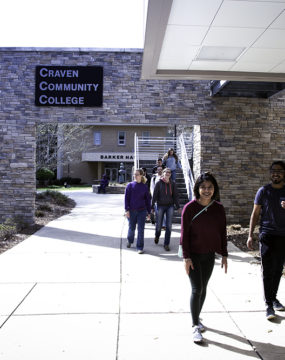Keep up with our latest demographic insights

Colleges and universities can have a significant impact on local demographic and economic statistics. College towns tend to see inflated poverty rates: more off-campus students (as share of population) corresponds to higher poverty rates. In Boone, North Carolina, for example, off-campus students at Appalachian State University make up 57% of the local population* and the local poverty rate is 62%. Some of these poor individuals may be college students who are choosing not to work…

As the month of October comes to a close, we reach the first holiday of the autumn season: Halloween. To help you prepare, we’ve put together a guide to the number of trick-or-treaters in the state this year, and a map of where one can expect to get the most visitors! We’ve also run the numbers on North Carolina’s contribution to the holiday, by way of its numerous candy factories and stores. This year, we…

There is a newer version of this blog post available: North Carolina’s Hispanic Community: 2019 Snapshot Series note: This post and the next few in the series are the outgrowth of a presentation jointly developed with Dr. Krista M. Perreira and presented by Dr. Perreira to the October meeting of the North Carolina Governor’s Advisory Council on Hispanic/Latino Affairs. Terminology note: The U.S. Census Bureau introduced the term Hispanic in 1980 and this is a…

In the next few months, the U.S. Census Bureau is releasing multiple data products that will provide new years of data, as well as some new detail not currently available. Here are the four most valuable updates for better understanding NC and its changing demographics: New county-to-county migration flow tables updated with 2011-15 data. The release of these tables and the update to the Census Flows Mapper web application will be the first time that non-overlapping…
After the Great Recession, the volume of Mexican immigration to the United States—and North Carolina—dropped sharply. Between 2009 and 2014, the Pew Hispanic Center found that more Mexican immigrants had returned to Mexico than immigrated to the U.S., with an estimated net migration of -140,000 individuals. During this same time period, Asian countries, such as China and India, emerged as leading senders of immigrants. Similar trends were documented in North Carolina. New data from the…
Over half (54%) of North Carolina’s voting-eligible (18+ citizen) population is North Carolina born, according to estimates from the 2014 American Community Survey. This is slightly below the national proportion of 56% of eligible voters born in their current state of residence. Louisiana has the highest proportion of state native potential voters at 77% while Nevada has by far the lowest rate. Just 14% of Nevada’s voting-eligible residents were born in Nevada. As individuals moved…
North Carolina’s population is rapidly diversifying. Since 2000, the state’s Asian population has more than doubled, increasing from 114,000 to 268,000, a growth rate of 136%. The Hispanic population has grown at a similar pace, with even more significant numeric increases. In 2000, North Carolina had 379,000 Hispanic residents. By 2015, the Hispanic population was nearly 912,000, an increase of more than half a million or 141% over fifteen years. This diversity is not fully…
Working-age adults (18-64) make up the majority of migrants into and out of the state. On average, nearly 243,000 working-age adults moved into North Carolina each year between 2010 and 2014 while 175,000 moved away, an annual net gain of 68,000 working-age adults. Working-age adults who moved into or out of the state had higher educational attainment than non-migrants (individuals who either did not move or made a move within North Carolina boundaries). Sixty-eight percent of migrants had some form of postsecondary education compared to 60% of non-migrants. This difference was primarily driven by high levels of individuals reporting a bachelor's degree or higher among migrants (34% versus 26% among non-migrants). Because North Carolina has net gains from migration, the overall impact of migration is to grow the state’s workforce while also increasing its educational attainment. Every year since 2010, North Carolina has gained an average of 68,000 working-age adults. Of these, 24,000 have some college or an associate’s degree while 22,000 have a bachelor’s degree or higher.
In 2000, nearly 515,000 of the state’s 3.1 million households—16%—received retirement income. This proportion increased to 19% or 693,000 households by 2010-14, according to the American Community Survey. While the number of households receiving retirement income has increased by 178,000, a growth rate of 35%, the aggregate value of retirement income received has grown even more. Retirement income received by North Carolina households rose from $8.7 billion in 2000 to $15.1 billion by 2010-14. This…
Over at Old North State Politics (and on Twitter as @BowTiePolitics), Dr. Michael Bitzer of Catawba College has been diving into the State Board of Elections registered voter data to understand demographic and partisan trends in voter registration. In response to recent posts about generational patterns, someone asked: “What percentage of each generation remains unregistered to vote in North Carolina?” Our estimates indicate that 14% of voting-eligible Millennials (ages 18-34 in 2016) and 8% of…
Your support is critical to our mission of measuring, understanding, and predicting population change and its impact. Donate to Carolina Demography today.